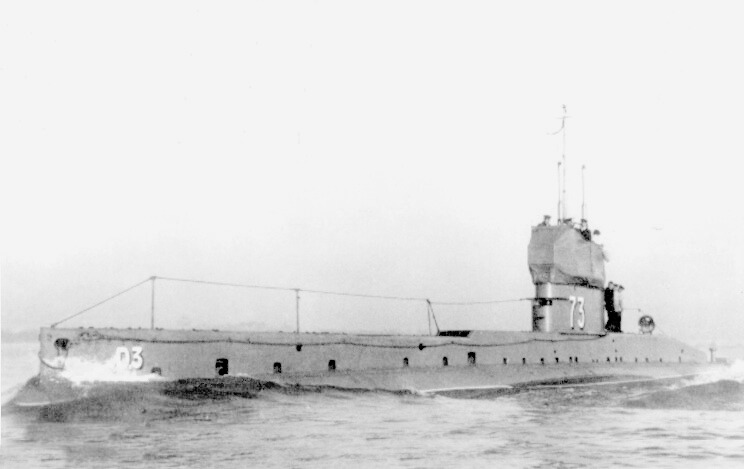Friendly Fire Tragedy! How French Airship Sank British Submarine Killing 29 Sailors In One Of Worst Accidents

The specter of friendly fire looms ominously in every major conflict. Even amidst the current strife in Ukraine, there are various reports of Russian forces inadvertently targeting their equipment in the heat of battle.
Despite advances in military technology and training, such occurrences persist, underscoring a historical trend dating back to World War I. During that tumultuous war, incidents of friendly fire were tragically commonplace.
One particularly notable event took place in March 1918, when the British Royal Navy submarine HMS D3 fell victim to friendly fire from the French airship AT-0.
HMS D3, a member of the D-class submarine series in the British Royal Navy, was one of eight vessels of its kind. Constructed by Vickers at the Barrow-in-Furness facilities between 1910 and 1911, it was launched on October 17, 1910, and commissioned on August 30, 1911.
During wartime, HMS D3 was assigned to the 8th Flotilla stationed at HMS Maidstone in Harwich. Its main mission was to enhance the grand fleet’s operations and neutralize German warships.
The 8th Flotilla, operating D- and E-class submarines from Harwich, was tasked with offensive operations in the North Sea during wartime. As tensions with Germany rose, the British Fleet mobilized on August 1, with D3 stationed at Harwich when the UK declared war on August 5.
Initially engaged in defensive operations, D3 patrolled the English Channel in early August to safeguard the British Expeditionary Force’s passage to France. Throughout 1914 and into 1915, D3 undertook various patrols and encounters, including incidents like the spotting of German vessels and engagement attempts, but without significant success.
By early 1916, D3 was still active in patrols, including operations off the Dutch coast, but later transferred to the 3rd Submarine Flotilla by September 1916.
Over time, its operations expanded to include missions off the Dutch coast and anti-submarine patrols off the West coast of Ireland.
Despite several engagements, including a missed opportunity to intercept a German submarine on April 23, 1917, D3 continued its service, eventually transferring to the 6th Submarine Flotilla based in Portsmouth by January 1918.
Submarine HMS D3 Was Sunk By French Airship AT-0
In the afternoon of March 12, 1918, a French AT-0 airship, under the command of Lieutenant Saint-Remy, patrolling the coastal area northwest of Dieppe, encountered an unidentified vessel to the northeast.
Upon their approach, the crew of the AT-0 airship discerned the vessel as a submarine swiftly traveling westward on the surface.
To identify itself, D3 discharged rockets, but unfortunately, the AT-0 crew misinterpreted these actions as an aggressive move directed toward their airship.
This perceived threat prompted Lieutenant Remy’s radio operator to unleash a barrage of machine gun fire, causing the submarine to initiate a dive. Soon, Lieutenant Remy positioned his aircraft for an offensive maneuver, deploying two F-bombs that detonated approximately 20 meters wide of the submarine.
After regaining its position, the airship released four additional F-bombs just ahead of where the submarine had submerged. Shortly thereafter, the submarine’s conning tower emerged from the water’s surface.

Sensing a shift in the situation, Remy withdrew and attempted to communicate the events regarding the submarine attack. Using field glasses, the crew of the airship observed four survivors adrift in the water, with no sign of the submarine.
Upon spotting the survivors and hearing their cries for help, the commanding officer of the AT-0 airship realized the possibility that a British submarine might have been downed.
In response, Lieutenant Remy descended within 20 meters of the water’s surface, halting the airship’s motors in a bid to assess the situation and potentially aid those in distress.
He believed he heard a man cry out, “You have got us” in English. Despite attempts to rescue them, dropping life preservers from the airship, the efforts proved futile.
The AT-0 released a lifebelt and set out to locate a vessel for the rescue operation, but tragically, the men drowned before aid could reach them.
Following a flight lasting 7 hours and 48 minutes and an unsuccessful quest for survivors, Lieutenant Remy and his crew returned to Le Havre under the cover of nightfall.
Subsequently, a thorough investigation was conducted at Le Havre into the sinking of D3 on March 16, 1918. However, no responsibility was placed on Lieutenant Saint-Remy for the tragic incident.
The lack of familiarity with British grenade recognition signal rockets among French soldiers at that time compounded the misunderstanding. The loss of HMS D3, along with the lives of 29 brave souls, ultimately faded into obscurity as just another unfortunate casualty of war, soon forgotten amidst the broader context of conflict.
- Questions and Answers
- Opinion
- Motivational and Inspiring Story
- Technology
- Live and Let live
- Focus
- Geopolitics
- Military-Arms/Equipment
- Security
- Economy
- Beasts of Nations
- Machine Tools-The “Mother Industry”
- Art
- Causes
- Crafts
- Dance
- Drinks
- Film/Movie
- Fitness
- Food
- Games
- Gardening
- Health
- Home
- Literature
- Music
- Networking
- Other
- Party
- Religion
- Shopping
- Sports
- Theater
- Health and Wellness
- News
- Culture


